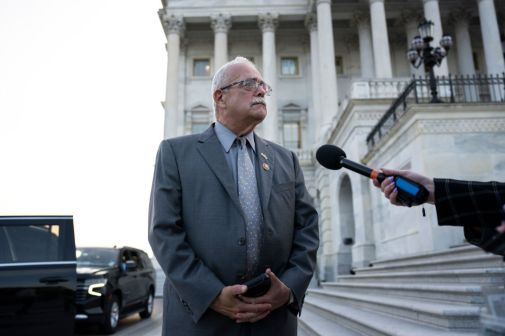Adopting agile mindsets can help agencies ace their FITARA scorecards

When federal agencies saw their latest FITARA scores in December, they should have congratulated themselves on significantly improving in several key areas, as overall grades improved from June 2019. But as Akio Toyoda, president of the Toyota Motor Corporation, once famously said, “I believe there is no best, only better.”
With the next scorecards set to be released in June, agencies should look at this as a time to continue to build on the momentum they showed last year.
Adopting some of the principles that have become the hallmark of agile software development is a good start. Let’s take a closer look at how agencies can develop core agile principles to make their modernization efforts worthy of an “A” grade.
“Simplicity — the art of maximizing the amount of work not done — is essential.”
Agile teams prioritize the things that are most important to their organizational goals and approach development in a piecemeal fashion. Agencies would do well to approach their modernization efforts in the same way. FITARA scorecards have seven categories ranging from “Agency CIO Authority Enhancements” to “Cyber.” Looking at it from a macro perspective, tackling all of these categories simultaneously can be daunting.
Instead, agencies should focus on improving in the areas that are most important to their organizations. For example, perhaps datacenter optimization is not as critical right now to an agency in dire need of improving cybersecurity. That agency should prioritize shoring up its approach to risk management. They might receive a better score in the “Cyber” category at the expense of their “Data Center Optimization Initiative” score, but their efforts will be in line with their organization’s goals. Plus, they can focus their energy on datacenter optimization the next time around, if they so choose.
At the end of the day, everything in the scorecards is important, but tackling the most important things first and seeing some immediate and measurable improvements in specific categories can make it easier to boost performance in the areas that matter most at the time. Quick wins can also be empowering and help teams get ready for the next project.
In fact, wins are regularly celebrated by agile development teams. Team celebrations can increase employee engagement, which is a key focus of the Office of Personnel Management’s annual Federal Employee Viewpoint Survey. The same mentality can and should be encouraged as agencies look to improve both employee satisfaction — and their scores.
“Business people and developers must work together daily throughout the project.”
Collaboration is an essential part of agile software development. Managers help agile team members to understand the goals of their organizations so that the applications they’re developing are in-line with organizational needs. Everyone works closely together to share ideas, solve problems, and make sure that things stay on track.
FITARA success is also highly dependent on open communication that starts at the top. The majority of agencies that have seen scorecard success have the support of an open, dynamic, and transparent leadership team that has established clear directives and shares them frequently with IT.
Successful agencies tend to have FITARA coordinators within the CIO shop. These coordinators work closely with IT teams to help them follow FITARA maturity model guidance. They also help teams to have a full understanding of what the law requires. With this knowledge, team members can work toward a passing grade, and even go above and beyond them.
“Deliver working software frequently, from a couple of weeks to a couple of months, with a preference to the shorter timescale.”
Automating the development process helps minimize time-consuming manual processes, reduce the chance for mistakes, and accelerate the tempo of delivery. It reduces human error and frees agency staff to focus on automating other parts of the scorecard and improving service delivery. It also helps fulfill agile development’s promise for a faster, more iterative approach to software creation.
For instance, infrastructure that was once composed of racks of physical equipment is now virtual and software-defined using Infrastructure-as-Code. Similarly, regulatory compliance that once required copious amounts of three-ring binders, checklists on clipboards, spreadsheets, and humans to annually check the boxes can now be automated every code check-in and daily using machine-readable Compliance-as-Code. This can prevent security posture drift by keeping security standards in place at all times. In short, automated Infrastructure-as-Code and Compliance-as-Code can alleviate teams from having to manually oversee every aspect of their infrastructures and move compliance processes from “checking boxes” to “measuring what matters.”
The more things are automated, the less time is spent on necessary but painstaking tasks. It becomes easier for teams to focus on making value-added improvements where they really count, deliver results faster, and continuously improve.
“At regular intervals, the team reflects on how to become more effective, then tunes and adjusts its behavior accordingly.”
In short, agile development teams are constantly assessing what they do and how they do it. They learn from their efforts, make adjustments, and continue to push forward in an effort to always improve.
Indeed, continuous improvement is the driving force behind many of today’s most successful organizations, including Toyota Motor Corporation. President Toyoda’s perspective on work stems from his automobile company’s commitment to Kaizen, the English translation of which is “continuous improvement.” It emphasizes maximum quality, minimum waste, and a constant strive for greater efficiency and service.
Government agencies must adopt the same attitude, even if they score straight A’s on their next scorecards. Modernization is a journey without a destination, and there’ll always be room for improvement and sustained excellence.
David Egts is chief technologist, Red Hat Public Sector






